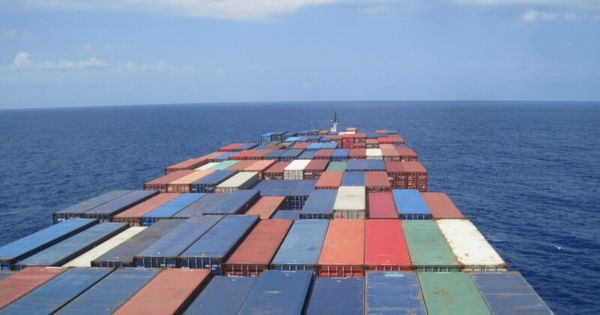Red Sea-Suez Crisis: Shipping Rates from Asia to Northern Europe and Mediterranean Quadruple
The crisis in the Red Sea-Suez area has led about 90% of container ships to reroute via Cape of Good Hope, resulting in a fourfold increase in shipping rates on the Asia to Northern Europe and Mediterranean trade routes.

A container Ship (Photo: AtlasObscura)
Approximately 90% of container ships that would ideally pass through the Suez Canal are now rerouting via the Cape of Good Hope. The impact? Shipping rates have quadrupled on the Asia to Northern Europe and Mediterranean trade routes. Rates to the Mediterranean have surged past the $5,000 mark, ending at $5,213, while rates on the Asia-Northern Europe route are around $4,500.
Interestingly, rates on both of these routes are higher than the Asia- US East Coast rate, which is at $4,170, nearly doubling since the Panama Canal restrictions. These factors have collectively caused the Drewry World Container Index to increase by 85% over two weeks, ending at $3,072, a level last seen around late October 2021. This indicates that the freight rate reductions during the fall of 2023 have lost their significance.
Supply chain disruptions are expected to continue, and Drewry comments that rates are likely to rise further. With the Chinese New Year in February being a critical time to observe and adjust as well as pricing activities, other factors need to be considered, including the implementation of the EU-ETS and related surcharges impacting transportation.
Rerouting has also affected port handling scenarios, with South African ports like Durban and Cape Town facing double-digit waiting times. On the shipping front, companies like CMA CGM and MSC, along with other major carriers, have temporarily suspended transit through the Red Sea.
While shipping rates continue to rise sharply in one direction, rates in the opposite direction are also climbing. Europe-Asia rates have increased by 40% in one quarter, while the Asia-US West Coast route, the least impacted long-haul trade, has still risen by 33% in two weeks. If this situation persists, it remains to be seen whether the US rail system will be utilized to effectively shorten the end-to-end supply chain cycle time.
A key consideration is the impact of these rates on the long-term contract freight market as it undergoes adjustments in the coming quarter. And although rates are projected to rise in double-digit percentages in the coming weeks, a top-of-mind concern is the global macroeconomy and impending inflation shocks. The World Bank has officially warned about ongoing geopolitical volatility by highlighting potential energy supply disruptions.
A clear forecast of orders, requirements, and essential demands is needed to address this situation, and this will involve participation from all stakeholders.
Further Reading:
- Is the Sudden Spike in Container Freight Rates an Overreaction to the Red Sea Diversions?
- International shipping and logistics market update - Week 02/2024
- Asia - Europe spot container freight rates increased more than 100% due to Red Sea terrorism
- Charter rates for container ships soar due to Red Sea route diversions
Source: Phaata.com (According to Gautham Krishnan | Container News)
Phaata.com - Vietnam's First International Logistics Marketplace
► Find Better Freight Rates & Logistics Services!













.webp)





.webp)

